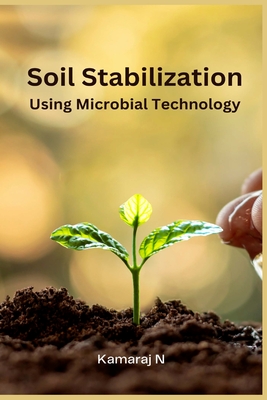You are here
Back to topSoil Stabilization Using Microbial Technology (Paperback)
Email or call for price
Description
Microbial Soil Stabilization Techniques: A Sustainable Solution for Environmental Remediation and Construction
Soil stabilization is an important aspect of construction and environmental remediation. Soil is a vital component of the natural ecosystem and is susceptible to erosion, degradation, and other forms of damage caused by human activities. The traditional methods of soil stabilization such as the use of chemical additives and mechanical compaction have some drawbacks. These methods are not always sustainable, environmentally friendly, and can have long-term effects on the soil structure and its properties.
Microbial soil stabilization techniques have emerged as a promising alternative to the traditional methods of soil stabilization. These techniques use microbial technology to promote the formation of a stable soil structure, which improves the physical, chemical, and biological properties of the soil. This approach is sustainable, eco-friendly, and has shown excellent results in soil stabilization, erosion control, and environmental remediation.
One of the significant advantages of microbial soil stabilization techniques is the ability to promote biodegradation of organic matter in the soil. This process is accomplished by introducing microbial communities that break down organic compounds in the soil, resulting in the production of stable by-products. This process also helps to control the population of harmful microbes in the soil, which can contribute to soil degradation.
Bioconsolidation is another important microbial soil stabilization technique that involves the use of microbes to enhance the soil's strength and stability. This process is achieved by introducing bacteria and fungi that produce biofilms, which bind the soil particles together. This bio-cementation technique is effective in stabilizing slopes, embankments, and other areas susceptible to erosion and landslides.
Biomineralization is another promising microbial soil stabilization technique that involves the use of microorganisms to precipitate minerals in the soil. This process is achieved by introducing microbes that catalyze the formation of mineral crystals in the soil, resulting in improved soil structure and stability. This technique is particularly useful in areas with low soil cohesion and high erosion rates.
Bioremediation is another microbial soil stabilization technique that involves the use of microorganisms to degrade pollutants in the soil. This technique is effective in treating contaminated soils and restoring their natural properties. Bioremediation is an eco-friendly alternative to traditional soil remediation techniques that often involve the use of chemicals.
Microbial enzymes play a critical role in the effectiveness of microbial soil stabilization techniques. These enzymes are responsible for catalyzing biochemical reactions that promote the growth of microbial communities and enhance the soil's properties. Microbial enzymes are particularly useful in breaking down organic matter, improving soil structure, and enhancing nutrient availability.
The application of microbial soil stabilization techniques has numerous benefits in the construction industry. These techniques can enhance the soil's stability, reduce erosion, and improve the soil's load-bearing capacity. This can lead to significant cost savings and reduce the amount of construction material needed for a project. In addition, microbial soil stabilization techniques are sustainable and eco-friendly, making them an attractive option for sustainable construction.
.
.
